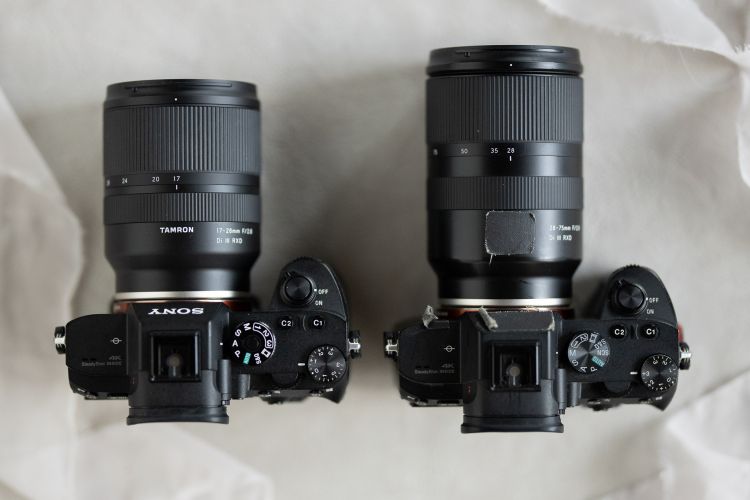-
Term:
Description:Term: Mirrorless Camera
Description: Mirrorless cameras generally refer to digital interchangeable lens cameras that have no viewfinder, or an electronic viewfinder instead. They are called mirrorless cameras because they do not have a reflex mirror or optical viewfinder like a DSLR camera. Instead, mirrorless cameras use an electronic viewfinder that displays what the camera's image sensor is seeing.
Mirrorless Camera
What is a Mirrorless Camera? Mirrorless cameras are becoming more and more popular, but what exactly are they? Keep reading to learn more about mirrorless cameras!
Mirrorless Cameras
The term mirrorless camera can be a bit misleading because a traditional point and shoot camera does not have a mirror. However, mirrorless cameras generally refer to digital interchangeable lens cameras that have no viewfinder, or an electronic viewfinder instead. They are called mirrorless cameras because they do not have a reflex mirror or optical viewfinder like a DSLR camera. Instead, mirrorless cameras use an electronic viewfinder that displays what the camera’s image sensor is seeing.

So, how do they work without the mirrors? As light passes through the lens and into the digital sensor, it is displayed directly on the camera’s LCD screen. When the shutter is pressed, the door slides up to block the image sensor – then the door slides down to allow light in, then back up – which captures the photo.
Since mirrorless systems expose the sensor directly to light, you can see a live preview of the image directly through the viewfinder. Not having the mirror box inside the camera body also allows these systems to be smaller than DSLR cameras.
History of Mirrorless Cameras.
The first mirrorless camera to be marketed commercially was the Epson R-D1, which was released in 2004. This was a very high-end, niche product with a price point of almost $3,000!
In 2008, Panasonic released their DMC-G1 mirrorless camera – which was followed by Samsung’s and Sony’s M4/3 systems. These cameras made significant progress in the mirrorless space, but still had work to do to catch up to the clarity and no-lag responsiveness of the viewfinders in DSLR cameras.

Sony released the first full-frame mirrorless camera in 2013 when they launched the ⍺7. This product is credited for starting the full-frame mirrorless revolution. They had a monopoly of the market for several years until Nikon and Canon entered the full-frame mirrorless camera market in 2018.
Today’s mirrorless cameras far exceed DSLRs when it comes to phase-detect autofocus, which can hit up to 20 frames per second while using almost 700 focal points. Likewise, other advancements have allowed mirrorless lenses to become more interchangeable.
Similarly, mirrorless system digital cameras have become much more affordable. You can find one that will fit any budget, ranging from $500 to over $2,500.
Benefits of Mirrorless Cameras
Mirrorless system digital cameras are a great option for both amateur and professional photographers. The mirrorless body is more lightweight and compact than traditional DSLR cameras, making it ideal for travel photographers!

The electronic viewfinder found on mirrorless cameras allows you to have a live view of what the final image will look like through the LCD screen. You can adjust brightness, exposure, and saturation to find the perfect settings before you even take the photo.
Mirrorless cameras tend to have higher shooting speeds and improved focusing capabilities, so your images are clearer and more professional. The autofocus benefits of mirrorless cameras far exceed those of DSLRs, with a higher number of focus points that are spread across the entire frame.
Related Articles to Mirrorless Camera Definition
DSLR vs Mirrorless Cameras | Which Is the Right Option for You?
DSLR vs Mirrorless cameras, which is better? Is there even a correct answer? Pye and I go head to head to discuss the pros and cons of each and debate which is better.
Nikon Z7 II Review | The Best Landscape Photography Camera, Again
Nikon’s new flagship high-megapixel full-frame mirrorless camera delivers some of the best image quality around, in a robust, professional package, with a competitive and cutting-edge feature set.
Nikon Z5 Review | The Best Value Full-Frame Mirrorless Camera
With so many attractive features for the low price of $1,400, is this full-frame camera too good to be true? For most types of photography, it’s almost perfect.
Mirrorless Cameras All Have This Frustrating Flaw, But I Fixed It
Hey Sony, Canon, and Nikon! You’re about to race each other to the patent office. Get ready!




Get Connected!